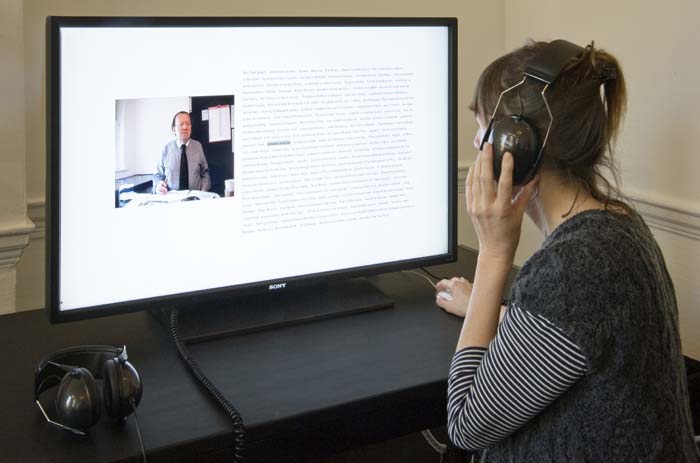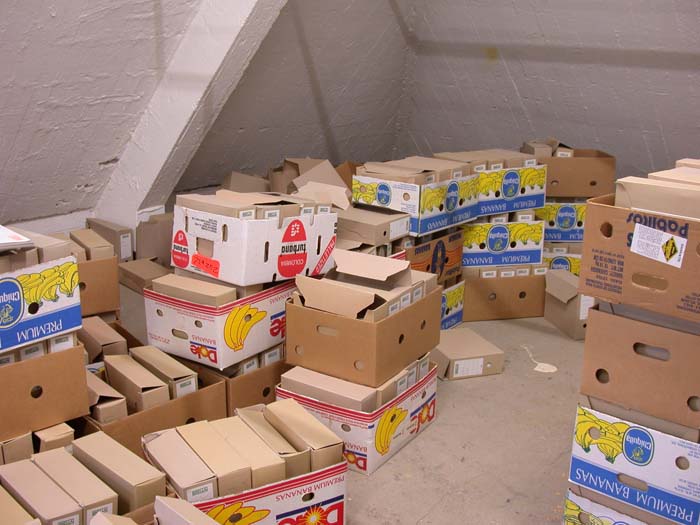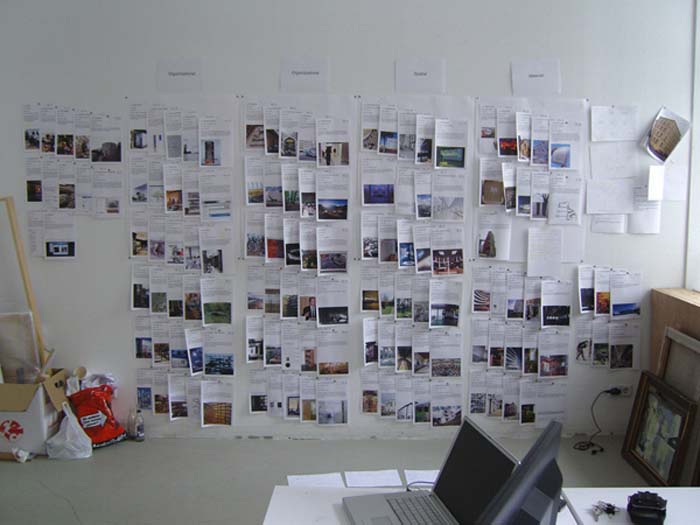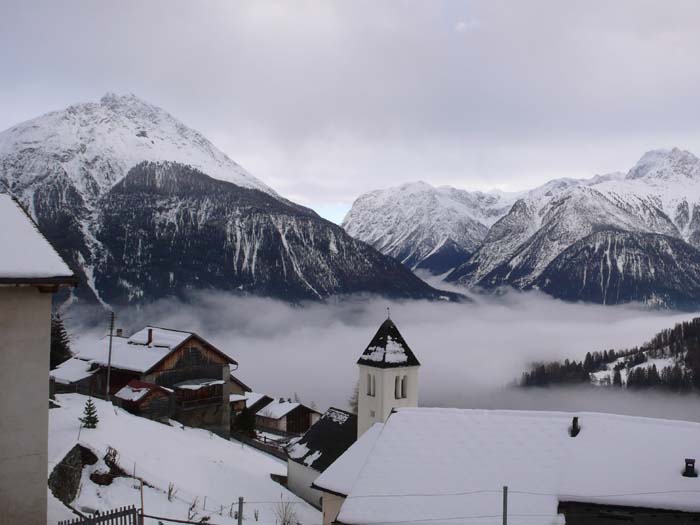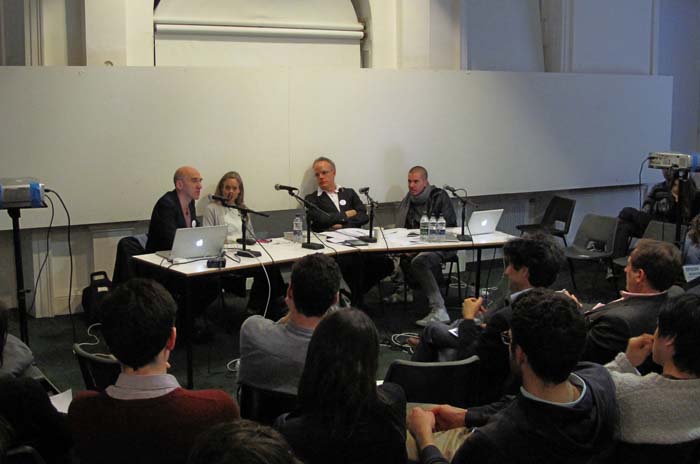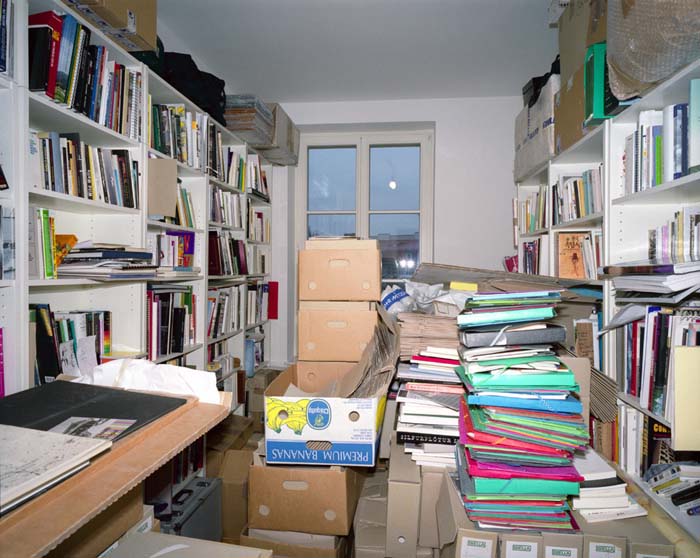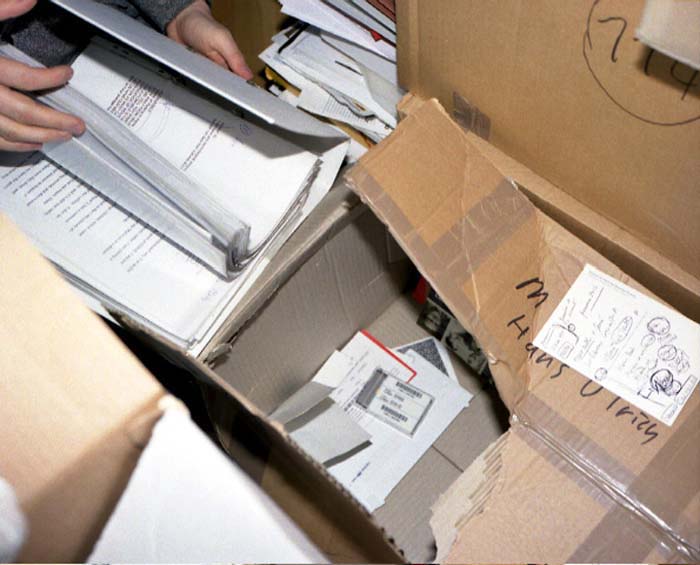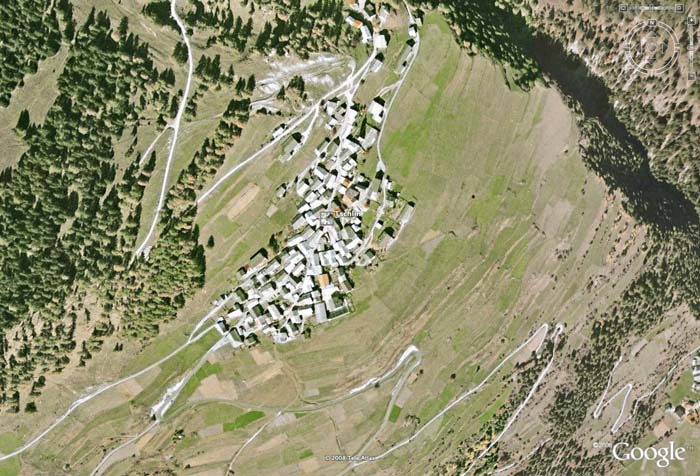Hans Ulrich Obrist Archive
The Archive as a Productive Space of Conflict
2011
Berlin+
Other Locations: Karlsruhe, London, Venice, Tschlin and Faernigen
Phase 3 commissioned by HfG Karlsruhe & HEAD Geneva, Venice Architecture Biennale
In Collaboration with Hans Ulrich Obrist, Wilfried Kühn & Armin Linke, Kilian Fabich & Stella-Sophie Seroglou, Jan Nauta & Scrap Marshall (POA), Yann Chateigne, Samantha Hardingham, Bettina Pousttchi, Valerie Bennett, Jens Hartwig
- Project devised at the Brutally Early Club by Hans Ulrich Obrist and Markus Miessen
- Cedric Price/ Interview Archive project, curated by Hans Ulrich Obrist
In collaboration with HfG Karlsruhe, supervised by Prof. Armin Linke, Prof. Markus Miessen, and Prof. Wilfried Kühn. - Student researchers: Kilian Fabich, Stella-Sophie Seroglou, and Ulrich Steinberg
- Wish We Were Here, Cedric Price exhibition, Architectural Association, London Photography by Valerie Bennett.
- HUO Archive Lüneburg photography by Jens Hartwig
- HUO Archive Berlin photography by Armin Linke & Bettina Pousttchi
Research
This applied research project, based at the Hochschule für Gestaltung in Karlsruhe (Karlsruhe University of Arts and Design), dealt with archival practice and its spatial repercussions, while focusing specifically on the question of how archives can become machines for production rather than simple reservoirs and storage units of existing knowledge. Set within the departments for Exhibition Design and Curatorial Practice, the project, studio and seminar directed by Markus Miessen followed two strands of inquiry: on the one hand, it attempted to illustrate some of the mechanisms at play when considering archival practice and its means of successive production, on the other hand, it asked this question through the eyes of critical spatial practice.
The starting point for this project was an inquiry by the Berlin-based architecture practice nOffice (Miessen Pflugfelder Nilsson), who were working on and around questions of archives, libraries, and cultural centres, and – more specifically – how to make archives productive, how to integrate, cross-pollinate and bastardize a plethora of cultural programmes into a single spatial unity. This was explored through a series of test-cases, called ‘hubs’ (such as the Performa Hub NY, 2009, Manifesta Hub, 2010, and Archive Kabinett, 2010), and was being developed for the Hans Ulrich Obrist archive and cultural centre, which was devised by Hans Ulrich Obrist and Markus Miessen in 2008.
The research project specifically interrogated whether archives and/or cultural components necessarily need to be exposed to spatial permanence, and – if so – what design framework has to be applied in order for those components to be able to take on more than a singular form of existence, i.e. permanence versus temporality, single-location versus nomadism, questions of potential public(s), physical versus virtual accessibility, means of production, to name a few.
Over the past five to ten years, conflict has been theorized not simply as that which is contained in space, but rather that which is productive of space itself – and also not in dichotomous relation to non-conflict. Attempting to illustrate how new spaces of knowledge and exchange can be devised, developed, and designed, the studio claimed the archive as a space of conflict, one in which knowledge itself presents a stage for productive dispute and struggle, nested in a specific setting, which allows for those conflicts to take place.
Based on the central question regarding scenographic methods in the light of presentability of content, it inquired the integration of spatial design, content networks, curatorial concepts and organizational frameworks into a single, holistic approach. Hence, spatial and curatorial practice combined with content-related design mechanisms begin to inform a modus operandi towards an applied editorial critique.
Research Trips and Publication
The project as well as research seminars continued to undertake a series of visits to relevant spaces, including the Hans Ulrich Obrist archive, Harald Szeemann’s Fabbrica, Merve Verlag archive, Archive Kabinett, and Christoph Keller’s Stählemühle, amongst others. The project and seminar so far culminated in a series of decentralized and contextualized non-public conferences, exhibitions, as well as a substantial publication and research report to be released in Fall 2013 (Sternberg Press).
Exhibition
Wish We Were Here is a touring exhibition curated by Samantha Hardingham and Hans Ulrich Obrist. It is in part a restaging of VENIC VENIC made for the 12th International Architecture Exhibition, ‘People Meet in Architecture’, Venice Biennale 2010 directed by Kazuyo Sejima and with thanks to Paolo Baratta, President of the Fondazione La Biennale di Venezia. VENIC VENIC was made possible by the additional support of the Institute of the 21st Century: Bettina Korek, Karen Marta and Justin Conner and that institute’s fiscal sponsor, Pasadena Arts Council.
Wish We Were Here is made in collaboration with AA Photo Library and AA Archives; The Cedric Price Estate; The Canadian Centre for Architecture, Montreal; Jan Nauta and Scrap Marshall (POA); sculptors Gary Woodley and Gavin Weber; and the students of the Hochschule für Gestaltung Karlsruhe (HfG); Kilian Fabich and Stella-Sophie Seroglou, supervised by Wilfried Kühn, Armin Linke and Markus Miessen.
Phase 1: Hans Ulrich Obrist & Markus Miessen
Phase 2: Hans Ulrich Obrist & Markus Miessen, Michelle Nicol, Rudolph Schürmann, nOffice (Miessen Pflugfelder Nilsson)
Phase 3: Hans Ulrich Obrist, Armin Linke, Wilfried Kühn, Samantha Hardingham, Markus Miessen
Phase 4: Markus Miessen & Yann Chateigne
